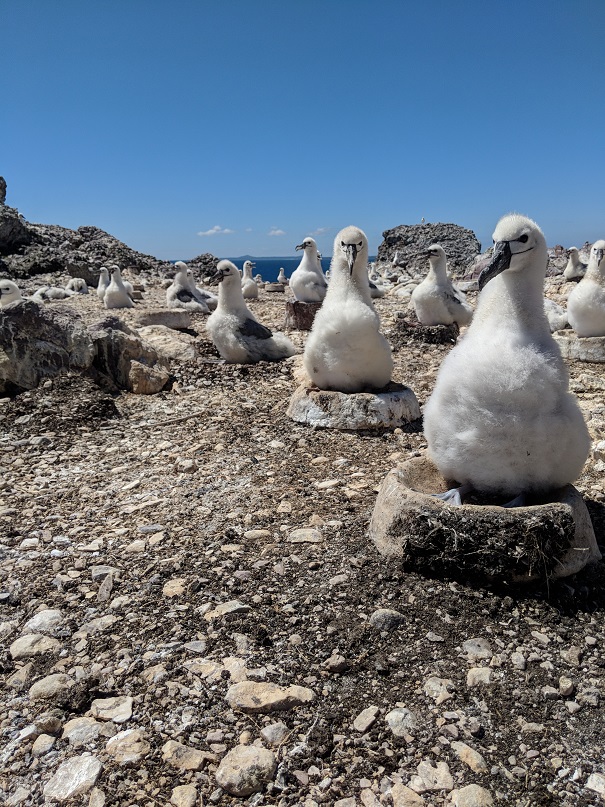ACAP Latest News has previously posted on efforts to increase the breeding success of globally Near Threatened Shy Albatrosses Thalassarche cauta on Australia’s Albatross Island by the provision of artificial nests (click here).
Last year in July 120 of the specially manufactured 12-20-kg nests were deployed on the island before the beginning of the breeding season. It was reported from an October return to the island in Bass Strait that birds had commenced to lay eggs in the artificial nests (click here)
Two types of artificial nests were manufactured. “Hebel” nests were made of an aerated and lightweight concrete product carved to shape. The other type was fashioned from a mudbrick, made from a mix of fibre, sand and clay. For biosecurity purposes the artificial nests were autoclaved before being taken to the island.

A Shy Albatross on a "Hebel" artificial nest; the material on the right lip of the nest was added by the birds themselves

Post-guard downy chicks on two mudbrick nests in the foreground, with a chick on a natural nest behind to the left
A further follow-up visit has shown promise: “the breeding success [to date] of pairs on artificial nests [are] 20% higher than those on natural nests” (click here to view a short video clip).
Rachael Alderman (Department of Primary Industries, Parks, Water and Environment, Hobart, Australia), project leader for the deployment of the artificial nests, writes to ACAP Latest News: “[w]e already know enough about climate change and Shy Albatross biology to know that we need to be proactive. With this project, we are aiming to develop adaptation options that may be used to increase the resilience of the Shy Albatross population in the face of climate change stressors. Importantly, we aim to develop and evaluate their efficacy while the population is still relatively abundant so we can select from a suite of proven tools in an informed manner – rather than be scrambling to intervene when we find the population at a critical level.”

Rachael Alderman checks a brooded chick on an artificial "Hebel" nest
A last visit will be made to the island in late March/early April just prior to fledging, so that final breeding success for both artificial and natural nests can be compared.
With thanks to Rachael Alderman for information and photographs.
John Cooper, ACAP Information Officer, 14 February 2018

 English
English  Français
Français  Español
Español